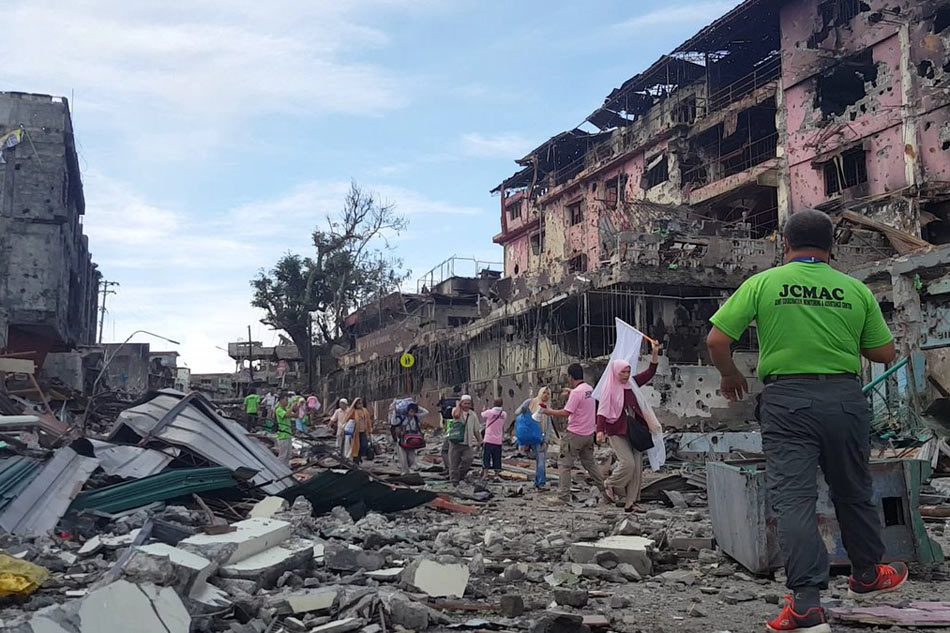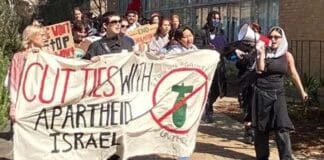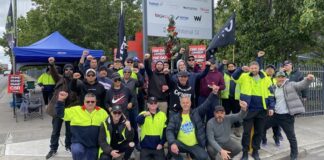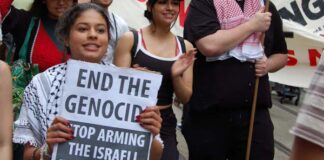On 23 May, the Philippines’s President Rodrigo Duterte declared martial law over the southern island of Mindanao.
The declaration came after several hundred fighters in Marawi City in Mindanao clashed with the Armed Forces of the Philippines (AFP). The fighters are from the Abu Sayyaf Group (ASG) and the Maute Group, both of which are reported to have sworn allegiance to Islamic State (IS).
The fighting was triggered by an AFP raid targeting ASG leader Isnilon Hapilon, who has long been hunted by the AFP and US troops.
The Maute group achieved notoriety in December 2016, when it briefly took over Butig, a small town near Marawi.
The US has been quick to seize on the IS connection to step up its military presence. In Mindanao, US forces are directly involved in surveillance and intelligence operations as well as providing weapons and equipment, as part of its Counterterrorism Program.

Australia, too, says RAAF spy planes will fly missions across the southern Philippines. Visiting US general, David Berger, urged Australia to get more involved as, “Both of us have a long history of being an expeditionary force when needed”.
Duterte’s declaration of martial law raised concerns that his regime, already infamous for his brutal extra-judicial killings in the so-called drug wars, was about to plunge the Philippines into the kind of dictatorship imposed by President Marcos in the 1970s and 1980s. In Manila, there have been demonstrations against martial law, against bombing Marawi and for the withdrawal of US troops.
Much of the media commentary has focussed on alarmist concerns that, with IS facing defeat in Iraq, Mindanao was about to become the basis for a new IS caliphate.
It suits Duterte, the US and the Australian government to portray the fighting as a backyard terrorist threat. The fighters are certainly Muslim. Islam spread though Mindanao in the 14th Century, 200 years before the Spanish brought Catholicism. Mindanao repelled attempted foreign domination by the Spanish, the Americans and the Japanese.
It was land-grabbing and transmigration by imperial Manila (the central government of the Philippines) that marginalised the Muslim population and eventually resulted in armed conflict with the Moro National Liberation Front (MNLF) in the late 1960s.
In 1996, the MNLF signed a “Final Peace Agreement”, which was meant to give some autonomy to Muslim majority areas. But the Moro Islamic Liberation Front, (MILF) which had split from the MNLF in 1984, continued the armed struggle until it too entered peace talks in the late 1990s. In March 2014, it signed a Comprehensive Agreement on the Bangsamoro with the government.
New groupings
But other groups were not satisfied. The Abu Sayaf Group split from the MNLF in 1991 and continued fighting, although at times ASG was more a bandit force known for kidnapping (and sometimes beheading) foreigners to raise ransom payments.
There have always been limited connections between the Muslim independence movements in Mindanao and other Islamic struggles.
The founder of the ASG, for example, fought against Russia in Afghanistan. But there is little evidence of substantial ties between the Filipino groups and groups in the Middle East.
The Maute family is well connected to the MILF hierarchy, but they too have long opposed its leadership and the peace process it negotiated. The Maute brothers were educated in Egypt and Jordan. Their parents, who own houses and businesses in Mindanao and Quezon City, have been watched by intelligence for at least a decade.
Raising the black IS flag in Mindanao seems a tactic to gain prominence in the local struggle for influence. Despite the media concern about the presence of foreign fighters, the AFP says it has found the bodies of just 11 foreigners, only three of them from the Middle East (two Saudis and one Yemeni).
In Mindanao, there is nothing to show for the peace agreements or the 25 years of promises by the central government to develop Mindanao. Four of the five poorest Filipino provinces are in Mindanao.
Marawi City sits within a province that is the poorest in the Philippines. The proportion of the population living below the poverty line has increased from 44 per cent to 75 per cent between 2006 and 2015.
The incorporation of previous independence movements is shown by the fact that when martial law was declared, both the MNLF and the MILF were reassured that the AFP would not interfere with the areas under their control. The MNLF even offered up to 5000 fighters to join the government forces at Marawi.
It seems only a matter of time before the AFP regains control of Marawi City, although much it has been destroyed by aerial bombing.
But it won’t be the last we hear of “terrorists” in the Philippines. The successive movements in Mindanao have grown out of poverty, discrimination and the failure of central governments to deliver on their promises.
As in the Middle East, imperialist involvement by US and Australia will only make that worse.
By Ian Rintoul





